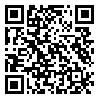BibTeX | RIS | EndNote | Medlars | ProCite | Reference Manager | RefWorks
Send citation to:
URL: http://jdisabilstud.org/article-1-3222-en.html
2- Assistant Instructor of Physical Education and Sports Science Department, Technical and Vocational University (TVU), Tehran, Iran
3- MSc in Sports Injury and Corrective Exercise, Faculty of Physical Education and Sports Sciences, University of Guilan, Rasht, Iran
4- PhD Student in Sports Injury and Corrective Exercise, Faculty of Physical Education and Sports Sciences, University of Guilan, Rasht, Iran
Abstract
Background & Objectives: Posture control is defined as the ability to maintain the center of mass within the range of the support level, which will keep balance through the integration of information from the visual, vestibular, and sensory systems. This complex movement skill is acquired early in development and is refined throughout childhood. The child adapts to biomechanical constraints and sensorimotor information that facilitates adjustment to different task contexts and develops throughout life. Abnormalities of the lower limb, such as genu varum and genu valgum, affect the position of the center of pressure and balance when performing the one–sided balance task. The body weight is borne by the lower limbs, thereby rendering any deformity within this region capable of influencing postural control. This condition underscores the significance of assessing the impact of lower limb deformities on postural regulation. Also, maintaining balance in people with flat feet and genu varum requires more attention. This study aimed to investigate the effect of cognitive dual–task on postural control of children with flatfoot and genu varum.
Methods: The current study employed a quasi–experimental approach utilizing a pretest–posttest design. The statistical population of the research comprised the elementary school students of Bandar Anzali City, Iran. A total of 88 students, aged 7 to 12 years, were recruited using cluster sampling. The names of schools in the six districts of Bandar Anzali city were placed separately in six bags. Then, one school was randomly selected from each district as a sample school to participate in the research. After the initial screening in a targeted manner, three groups of individuals were selected: flat feet (24 students), genu varum (40 students), and healthy (24 students). In this study, a digital caliper was employed to measure the genu varum of the students by determining the distance between the medial epicondyles of the femur. Individuals were categorized into the genu varum group if the distance between the two medial epicondyles of the thigh exceeded 3 cm. In contrast, those with a distance of less than 3 cm were classified as healthy individuals. To assess flatfoot, the Stahli index was used, which involves dividing the narrowest part of the foot by the width of the heel. To perform the pretest, each participant was placed on the Static Stabilometer for 15 s, and the device recorded the displacement of the center of pressure. Next, after 3 minutes of rest, each participant was placed on the machine to perform the posttest. Random number counting was used to perform the posttest, which had two stages with different levels of difficulty based on the children's ability level. Step one includes counting backward from the number 35 or less to the end of 15 seconds. The second stage consisted of counting backward in the form of two middle numbers from 28 or less until the end of the test time. This study used a Static Stabilometer device (40 x 40 cm) manufactured by Danesh Salar Iranian Company (Tehran, Iran) to measure postural control during cognitive tasks. It measures the sway index in cm (numerical value of the standard deviation from the center balance), the mediolateral displacement of the center of pressure in cm, the anteroposterior displacement of the center of pressure in cm, and the sway speed of the center of pressure in cm/s. We used descriptive statistics to calculate postural control indices' mean and standard deviation. Also, we employed the repeated measures ANOVA test to compare the main effect of the cognitive task with different difficulties on the sway index of the center of pressure, the mediolateral displacement of the center of pressure, and the anteroposterior displacement of the center of pressure. The sway speed of the center of pressure was used in three groups of flatfoot, genu varum, and healthy individuals. The statistical analysis of the data was done using repeated measures analysis of variance and the Bonferroni post hoc test at a significance level 0.05 in SPSS version 28 software.
Results: The effect of the dual cognitive task on anteroposterior sway index (p=0.003), mediolateral sway index (p=0.028), and sway index (p=0.003) were significant, but the cognitive task did not show a significant effect on the sway speed (p=0.353). The results show that the group effect, the interaction effect of the group, and the cognitive task were insignificant in any of the postural control indicators (p>0.05). Also, there was no significant difference between the three groups of flatfoot and genu varum and controls in various indices of height control (p>0.05).
Conclusion: The displacement of the center of pressure displayed a uniform upward trajectory across all three participant groups during simultaneous cognitive task engagement, as opposed to isolated task performance. However, this increase has not significantly changed the three groups. Therefore, postural control in the three groups is not automatic and needs attention.
| Rights and permissions | |
 |
This work is licensed under a Creative Commons Attribution-NonCommercial 4.0 International License. |



